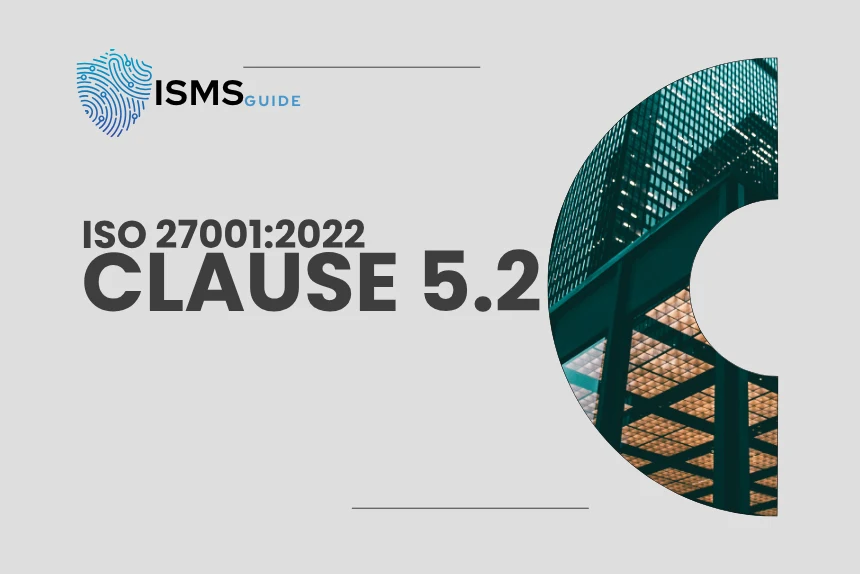Find out what an Information Security Policy needs to have according to ISO 27001 Clause 5.2. Know what it is for, what its main parts are, and how to make it fit with your ISMS.
Table Of Content
ISO 27001 Clause 5.2 – Information Security Policy
Clause 5.2 of ISO 27001:2022 says that an organization must create, put into action, and keep up an Information Security Policy that supports its strategic direction and overall ISMS goals.
This policy is the basis for all security decisions and shows that management is committed to protecting information throughout the company.
What Clause 5.2 Means
The goal of this clause is to make sure that top management gives clear direction and support for information security through a formal, approved policy document.
It sets standards for behavior, responsibility, and following the rules within the ISMS framework.

Important things to know about ISO 27001 Clause 5.2
An organization must:
- Make sure your Information Security Policy is right for your organization and its goals.
- Gives a structure for making goals for information security.
- Includes a promise to meet all necessary requirements.
- Includes a promise to keep making the ISMS better.
- Tell everyone who needs to know about the policy, both inside and outside the company.
- Keep the policy up to date and review it to make sure it is still useful and effective.
These requirements show that leaders are involved and make sure that information security principles are part of the company’s culture.

How to Make an Effective Information Security Policy
A good Information Security Policy usually has:
- Purpose and Scope – Defines what information and systems it applies to.
- Objectives – Links information security to organizational goals.
- Responsibilities – Outlines management and employee roles.
- Key Principles – Such as confidentiality, integrity, and availability.
- Risk Management Approach – Describes how risks are identified and controlled.
- Compliance and Legal Requirements – References applicable laws, standards, and contracts.
- Review and Approval – States the review frequency and responsible authority.
Awareness and Communication
Everyone in the organization needs to be able to access and understand the policy.
Here are some best practices:
- Putting it on internal platforms like the intranet, the HR portal, and onboarding materials.
- Adding it to training on how to stay safe.
- Telling third parties about important things when necessary (like suppliers and partners).
Link with Other Clauses
Clause 5.2 supports and interacts closely with:
- Clause 5.1 – Leadership and Commitment
- Clause 6.2 – Information Security Objectives
- Clause 7.3 – Awareness
- Clause 9.3 – Management Review
These things make sure that top management is actively in charge of the ISMS and that security is in line with the organization’s goals.
Examples of Policy Statements
An effective Information Security Policy might include statements like:
- “We are committed to maintaining the confidentiality, integrity, and availability of information.”
- “Information security objectives are established and reviewed annually.”
- “We comply with applicable legal, regulatory, and contractual requirements.”
- “We continually improve our information security management system.”
Commentary
Clause 5.2 may seem simple, but it is the most important part of ISO 27001 governance. A well-written Information Security Policy makes sure that security controls and business strategy are in line with each other. This sets the tone for a culture of protection and responsibility.





